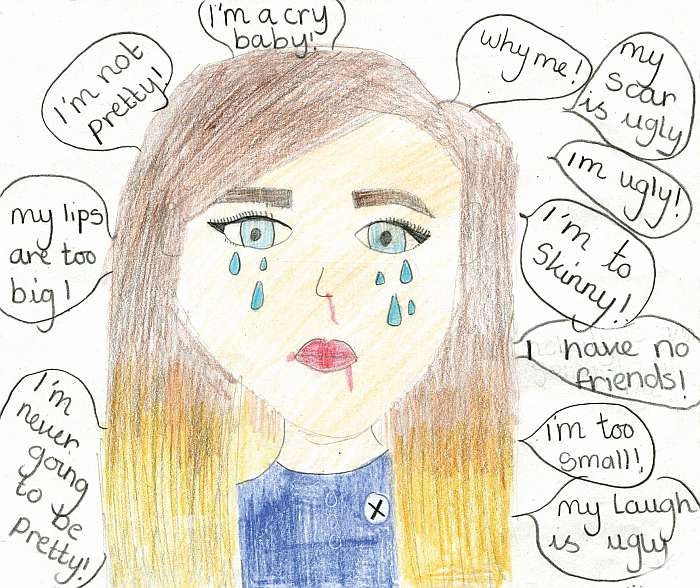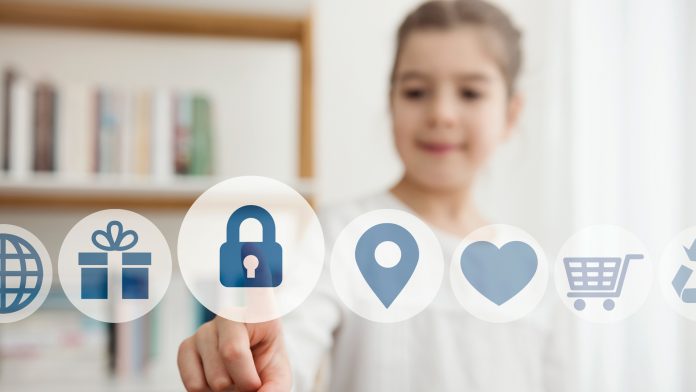While you’re busy in protecting your children from harm in the physical world, there’s a whole other realm of dangers lurking in digital spaces. Allowing your children tech access can seem scary, but it’s a necessity for life in the modern era—without it, they won’t be able to accomplish everything they need to do on their own as adults. Teaching internet safety to your kids can be hard, but with awareness, some parental control software and your best efforts, you can ensure that your children are safe and protected online at all times.

Kids can encounter all kinds of dangers, whether they’re sharing too much personal information online or getting tangled up in cyberbullying on social media platforms. To help you navigate these tricky waters, we’ve put together this guide on internet safety for kids that will assist you how to protect your children from the dangers of digital spaces and teach them how to avoid them in the future!




What Are Some Threats That May Put Your Children at Risk Online?
Some common dangers that children may face online given below, including being targeted by online predators, hackers and scam artists. You can take a number of steps to protect your child from cyber-bullying and other dangers. Parents can install parental control software on their child’s devices to keep them away from age-inappropriate websites and can discuss internet safety with their kids so they know how to respond when they do come across potentially dangerous situations.
Some Cyber threats are listed below:
1. Cyberbullying
2. Cyber Predators
3. Posting Private Information
4. Phishing
5. Falling for Scams
6. Accidentally Downloading Malware
7. Posts that Come Back to Haunt a Child Later in Life
8. Sexually explicit content
9. Violent or graphic content
10. Obscene or age-inappropriate content
11. Downloads of pirated materials
12. Unwanted advertising, pop-ups, and adware programs
13. Suicide due to cyber negative influence
14. or Online Phonography
15. Sending their nudes and sexting images

Observe Changes In Your Baby Behavior That Will Help Before Its Late
Your child may not tell you if they are experiencing bullying behavior online because of a fear it might make things more worse for them or they may lose access to their devices and the internet, you might yell on them. The changes might not be readily apparent at first, but as time goes on, you may notice one or more of the following behavioral changes that can be strong indicators of cyberbullying / cybercrime .
Some Changes in behavior is listed below
- Talking about suicide.
- Expressing dark thoughts or emotions.
- Crying in alone.
- Grades dropping.
- Isolating his or herself in their room more than usual
- A drop in social behavior — avoiding friends or social events.
- Changes in personality, becoming more quiet or withdrawn or anxious, sad or angry.
- Finding it hard to concentrate on schoolwork.
- Losing interest in activities that they normally enjoy.
- Skipping school or expressing a desire to skip school
- Appearing angry when looking at their phone, tablet, or computer
- Hiding their phone or computer screen from view
- Avoiding using their phone
- Using drugs or alcohol
- Being upset after using the internet or their mobile phone
- Appearing more lonely or distressed
- Unexpected changes in friendship groups

What Can I Do to Keep My Children Safe Online?
Talk to your child about cyber crimes before it happens. Together you can work out strategies to address any potential issues and reassure them you will be there to support them at any cost.
Allowing your children internet access can seem scary, but it’s a necessity for life in modern times. With so many risks lurking in digital spaces, it’s important to teach internet safety to your kids. Before handing over your laptop or tablet and letting them loose on Facebook or Skype,
Try these tips to keep them safe online.
- Don’t turn technology into a pacifier
- Most importantly, become your kids friends, so they will not hesitate in taking help from you.
- Give them importance while they are talking to you even on something which may be silly for you but important for them.
- Come up with a Acceptable Internet Use Policy In Your House. i.e. Dining table should be “screen-free zone”. You need to set firm boundaries in your family’s values and lifestyles. Limit screen time to a certain number of hours each day and define areas or times when screens are inappropriate, like in the car.
- Set limits that your children understand, otherwise they will find the another route to do the same and that may be more dangers.
- Allow your teenagers to be online.
- Don’t let screen time mean alone time.
- Use Parental Control on online access.
- Become their cyber friend and protect them from unwanted invisible enemies.

Parental Control : A Safe And Secure Online Experience For Your Kids
Very first, you ensure that you have given enough awareness to your kids. In kids safety, awareness works primary and technology works secondary.
Use technology to stop below online activities from Kids access:
How can you protect family to not get exposed to harmful side of internet.
- Interacting with strangers on Social Network
- Sharing the personnel information online
- Payment By Credit Card
- unwanted File Share
- Anonymous Proxy : Kids frequently uses the SSL proxy servers to bypass parental control
- Phonographic Sites
- Online Games
- Gambling and Betting sites
- Watching / reading Violence
- Buying or expressing too much interest in Weapons
- Illegal software installation
- Unconcerned content
- Drugs
- Block unwanted category sites
- Parents should have time based control i.e. when their kids can go for online gaming
- Block unwanted type of programs
- Restrict software installation rights
- Use antivirus

What To Do If Your Kid Is A Victim Of Cyberbullying
What does cyberbullying look like?
Cyberbullying is the use of technology to bully a person or group with the intent to hurt them socially, psychologically or even physically.
If your child is experiencing cyberbullying:
- Listen, think, stay calm : Talk to them about what happened, try to remain open and non-judgemental, ask them how they feel and ensure they feel heard.
- MAKE SURE YOUR CHILD IS (AND FEELS) SAFE.
- WORK WITH THE SCHOOL : In many countries, schools has cyberbullying policy. Seek the help of administrators if the target and aggressor go to the same school. Your child has the right to feel safe at school, and educators are responsible to ensure this through an investigation and appropriate response.
- Collect evidence — it is a good idea to collect evidence, such as screenshots, of the bullying behavior, in case you need to report it later on.
- Block and manage contact with others — advise your child not to respond to bullying messages and help your child block or unfriend the person sending the messages.
- Report to site or service — many social media services, games, apps and websites allow you to report abusive content and request that it is removed.
- Report to Local Police— if serious cyberbullying is affecting your child and you need help to get the material removed from a social media service or other platform you can make a cyberbullying report to local police.
- Get help and support from counselor (if required) — check in with your child regularly about how they are feeling. If you notice any changes that concern you, get help through a counselling or online support service.
- CONTACT THE POLICE IMMEDIATELY WHEN PHYSICAL THREATS ARE INVOLVED.
- Implement measures to prevent from reoccurring.

Online pornography
Your child may discover online pornography unintentionally, or they may go looking for it. Either way, you can play a role.
How do kids find pornography online?
- Targeted by Cyber Criminals
- Your child may actively search for explicit content online, out of curiosity or perhaps because their friends are talking about it.
- A friend or sibling (or an adult) may share inappropriate content.
- Your child may accidentally type the wrong word or phrase into an internet search or click on a link to something that looks interesting but turns out to be pornographic.
- They might click on links in phishing or spam emails, and pop-ups (even on harmless websites).
How can I protect my child from online phonography?
Set some ‘house rules — discuss the issue with all siblings and talk about where and when it is OK to use computers and devices.
Stay engaged — talking regularly and openly with your child about what they are doing online will help build trust.
Use the available technology — take advantage of the parental controls available on devices, and ensure the ‘safe search’ mode is enabled on browsers.
Build resilience — talking about sexualised content can help young people process what they come across online and reinforce the importance of consent and respectful relationships.
Consider raising the subject of pornography yourself — parenting experts recommend starting the conversation early (by the time they are around 9 years old) to help protect them from the potential impacts of coming across it accidentally. Every child is different, so decide when you think it is right to raise the subject with your child.
Take a long-term view — reinforce that if they do see something they do not understand, they can come and ask you about it.

How Can Parents Talk About Dangerous Things on the Internet with Children
According to American Psychological Association’s Monitor on Psychology, parents of children ages 8-18 spend an average of 6.3 hours per week talking about dangerous topics like alcohol, drugs, tobacco and sex with their kids, but nearly 75% admitted that they had never talked to their child about Internet safety. If you have a kid who uses the internet or social media, it’s important to talk to them about dangers in digital spaces so they can stay safe online.






